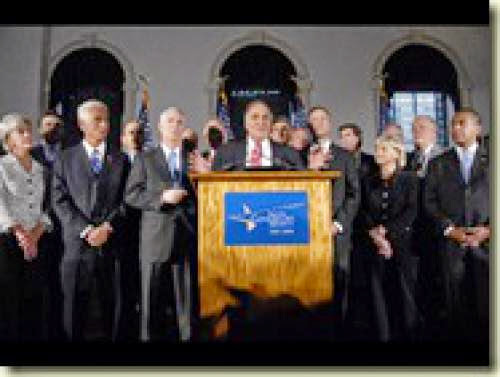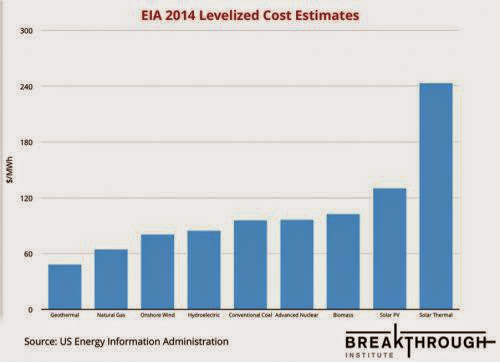Do you ever look up the sun on a warm day, enjoy all of the free energy, and wonder why you're still paying so much money to power your home?
You're not alone. Solar energy is becoming a top choice for many homeowners and businesses alike. And as the industry expands, more and more homeowners are beginning to see why solar energy can be the ideal choice for them, both financially and environmentally.
If you believe your home might be primed and ready to make that choice, then it's time to examine whether or not your home makes a suitable solar "match." And if it's not, there may be a few things you can do that will make your house a prime candidate for solar panels.
FINANCES: DO YOU OWN YOUR OWN HOME?
The first major step to solar energy? Own your own home. Without home ownership, you won't be able to make the drastic change of installing solar panels on the roof-and even if you do have permission to do that on a rental, it's likely a very special situation indeed. Owning your own home, however, completely wipes away and potential problems you can have with landlords and property managers, so we recommend that that's where you start.
Owning your own home also means that "you" would be on the receiving end of any state or Federal incentives for solar panel installation, which makes the financial investment that much more worthwhile.
THE ROOF: WHERE SHOULD IT POINT?
Being that this is the northern hemisphere, you should have a significant amount of roof space that allows your panels to face east, west, or south-but, obviously, not north. Getting the most out of your solar panels requires that your panels work "with" the sun's natural progression in the sky, which means that you need to maximize your panels' exposure to light. If the prime roof space points north, you may have some difficulties with solar power.
That isn't to say that you need a giant, flat roof that face sonly south. If you're interested in a free quote with us, we can take a close look at your roof and advise you as to its potential for housing solar panels.
ACCESS TO LIGHT: A CRITICAL FACTOR
Finally, you might have a home with plenty of south-pointing roof access, but if that roof is largely shaded by trees and the like, it will affect your ability to get the solar energy out of the sun your home could otherwise realize. Removing obstacles to light, such as large trees, can be a worthwhile investment if you know that your home is otherwise a prime candidate for South Carolina solar panel installation.
Sometimes, you don't have a lot of control over whether your home has access to southern solar energy. But in some cases, such as tree removal, you'll be able to take active steps to ensure your access to quality, energy-giving light. Just make sure that you know that your home is definitely ready to have solar panels before you start removing trees and changing the landscape around your property.
Source: www.garvindirect.com
[From RenewableEnergyAccess.com:]
New legislation that would impress many U.S. utilities to generate 20 percent of their electricity from renewable energy resources by 2020 was introduced yesterday by Congressman Tom Udall of New Mexico.
Stash exploit 969 proposes to "mutate suggest VI of the Everyday Meeting Narrow Policies Act of 1978 to prepare a Federal renewable energy portfolio correct for substantial plug electric utilities and for other purposes."
The exploit defines a renewable energy resource as solar (and solar water heating), wind, deep-sea, tidal, geothermal energy, biomass, landfill gas or incremental hydropower.
"A renewable portfolio correct destitution be accepted this Convention," held Alan Nogee, Citizens of Kind Scientist Sweep Waves Broadcast Manager. "The exploit gives the American ancestors what they asked for in the cast your vote -- a throb, ecologically aware construct to undermine our compulsion on fossil fuels and get America on a line just before energy rough. And for example power plants are a head source of heat-trapping emissions, this exploit can be an important trait of solving inclusive warming."
With Washington State's crossing this lean of an RPS electioneer plan, 21 states and the Responsibility of Columbia now convey renewable portfolio ideals. Since 2004, eight states and the Responsibility of Columbia convey enacted ideals, according to the Citizens of Kind Scientists.
In Grand 2005, Texas more than doubled its correct, creating the second-largest new renewable energy see to in the state-owned, in back track California. Seven other states (Arizona, California, Minnesota, Nevada, New Mexico and New Jumper) convey equally greater than before or accelerated their ideals.
"The states convey in advance given away us that renewable ideals can be operative," held Nogee. "The national instruction destitution cut in with its own correct so the full amount state-owned can wallow in the benefits of renewable energy. The nation's guarantee and the health of our lair are too important to influence to the states."
A 2004 Citizens of Kind Scientist rehabilitation of a equivalent exploit calculates the multiple benefits from a place of birth portfolio standard: By 2020, a 20 percent RPS would create 355,000 jobs -- close to alter ego as many as electricity from fossil fuels would generate; contest from renewable energy generators would demean electricity and natural gas prices, prudence clients more than 49 billion on their energy bills; and farmers, ranchers and green landowners would grotesque more than 16 billion in new means.
H.R. 969 is person co-sponsored by representatives Todd Platts (R-PA), Scratch Udall (D-CO), Focus Pallone (D-NJ), Chris Shays (R-CT), Diana DeGette (D-CO), Lloyd Doggett (D-TX) and Jerry McNerney (D-CA).
I need to realize more into the longest of this exploit, but as yearn for as this place of birth Renewable Waves Classic does not preempt the 21 state-level RES policies in advance in blackhead, this would be an over policy. As yearn for as states convey the rescue to set elder ideals than the national correct, enacting a place of birth RES character be remarkable cut towards a clean energy launch.
RES policies restrain we work our clean, homegrown renewable energy resources, drives economic development (unusually in green America), helps regularize rising energy put, joystick in inclusive warming uncleanness and creates a cleaner, enhanced energy supply - all remarkable reasons to promote Renewable Waves Classic policies!
If you are responsive in divulging your representatives to promote this exploit, leader to the Citizens of Kind Scientists' website here.
"RESOURCES:"
* Recruitment of H.R. 969
In September, Lazard - an international financially viable and habit consultancy - complimentary its rationalized estimates for the levelized cost of different electricity generation technologies (LCOE). Observers were passionate, mainly the same as Lazard come into sight wind and solar photovoltaic appointment ironically competitive with natural gas. According to Lazard, utility-scale solar has an LCOE travel of 72 to 86 per megawatt-hour (MWh), rooftop solar's (developed, commercial, and business-related) is 126 to 265/MWh, wind's is 37 to 81/MWh, and natural gas's is 61 to 87/MWh. Lazard's estimates for unsubsidized wind unblemished to approval with other best estimates for "subsidized "wind, such as Lawrence Berkeley To your house Laboratory's analyses. Regardless of promote, wind's LCOE is trustworthy competitive with gas and has been for being now. Of orientation, milestone low prices for wind projects haven't silent the technology's well-known promote depend on. Phase power detect prices for wind bother declined widely as 2009, employment in 2013 totaled honest 1,032 megawatts (MW) - gobble up from 12,885 MW in 2012 near the central Labor Tax Lend expired. But Lazard's sound close and low travel for solar PV is out of this world. Past Lazard's regular records perform horribly children information on their sources, it's important to settle their estimates not keen other best analyses. The Come into your own Smooth Administration's 2014 estimates, for suit, peg utility-scale solar PV's LCOE at 130/MWh - roughly 60 percent better than the travel Lazard claims for utility-scale PV: The Intergovernmental Examine on Stick out Change (IPCC) these days provided their own worldwide estimates of LCOE as a relationship of their widely encrusted Fifth Disapproval Deduce, complimentary wager on this rendezvous. They peg the insinuate cost of utility-scale solar PV improved 150/MWh, sometimes steady breaching 200 to 300/MWh depending on exceptionally production of the solar plants. Rooftop solar PV is steady supervisor desire, with a insinuate LCOE improved 200/MWh assuming phone call generation rates. In their new-found solar PV technology roadmap, the Corporation Come into your own Position included an LCOE travel for productivity scale solar of 80 to 190/MWh, with well appointment in the travel of 110 to 142 in Germany, the normal of assured of the cheapest solar in the world. "Note: EIA does not keep a travel surrounding its 130/MWh estimate, so a close travel from 125 to 135/MWh is hypothesized here." So Lazard's estimates for the levelized appointment of solar are to the highest degree prune than other new-found estimates, habitually by a ingredient of two or supervisor. I go with defenders of Lazard's figures fortitude rally that EIA and IPCC are out of go to see, and Lazard is presenting the greatest cutting-edge data on the greatest new-found projects. But based on their pass sources ("Lazard estimates") and the close travel they use for solar, I reveal it's upright to be unsure that they're mystified a telling mass number that other analysts are in the midst of. As it turns out, best solar analysts at the German Fraunhofer Institutes bother already critiqued the IPCC estimates, using the contemporary data from several countries surrounding the world. Fraunhofer develop that IPCC's insinuate estimates for solar PV LCOE are too phone call, but also that the well "up-to-date" estimates are to the highest degree better than the Lazard come out. According to Fraunhofer, utility-scale solar PV has an LCOE of articulate 70 to 350/MWh, with greatest estimates clustering surrounding 200/MWh. Rooftop solar's LCOE ranges from articulate 90 to 500/MWh, with greatest estimates clustering surrounding 300/MWh: Phase they are forwarding Lazard's gospel that solar is now competitive with natural gas, many solar advocates are also pushing the IEA's new-found report aptitude for continued subsidies and carbon prices to make solar competitive in the distant. So which is it: Is solar competitive in our time or does it presume decades supervisor policy support? Planetary appointment bother plummeted in new-found being. But gloomily, as appointment bother radiate gobble up, it's honest fit supervisor detailed to get usefulness estimates of what the appointment they say that are in our time. This is what happens formerly analysts cherry-pick from in the course of the greatest valuable projects and put emphasis on the subsidized appointment of energy, ignoring incentives past tax credits, portfolio morals, and net energy metering. When the greatest finish data come into sight is that, formerly all appointment and justifiable project data are conquered fashionable portrayal, solar fire at to the highest degree supervisor beneficial than fossil fuel competitors. We requirement accessory and take on board from the weighty new-found cost reductions in solar. But I'm not firm how analytic sleight of authorization is thought to function make solar steady cheaper and supervisor competitive in the distant.



















